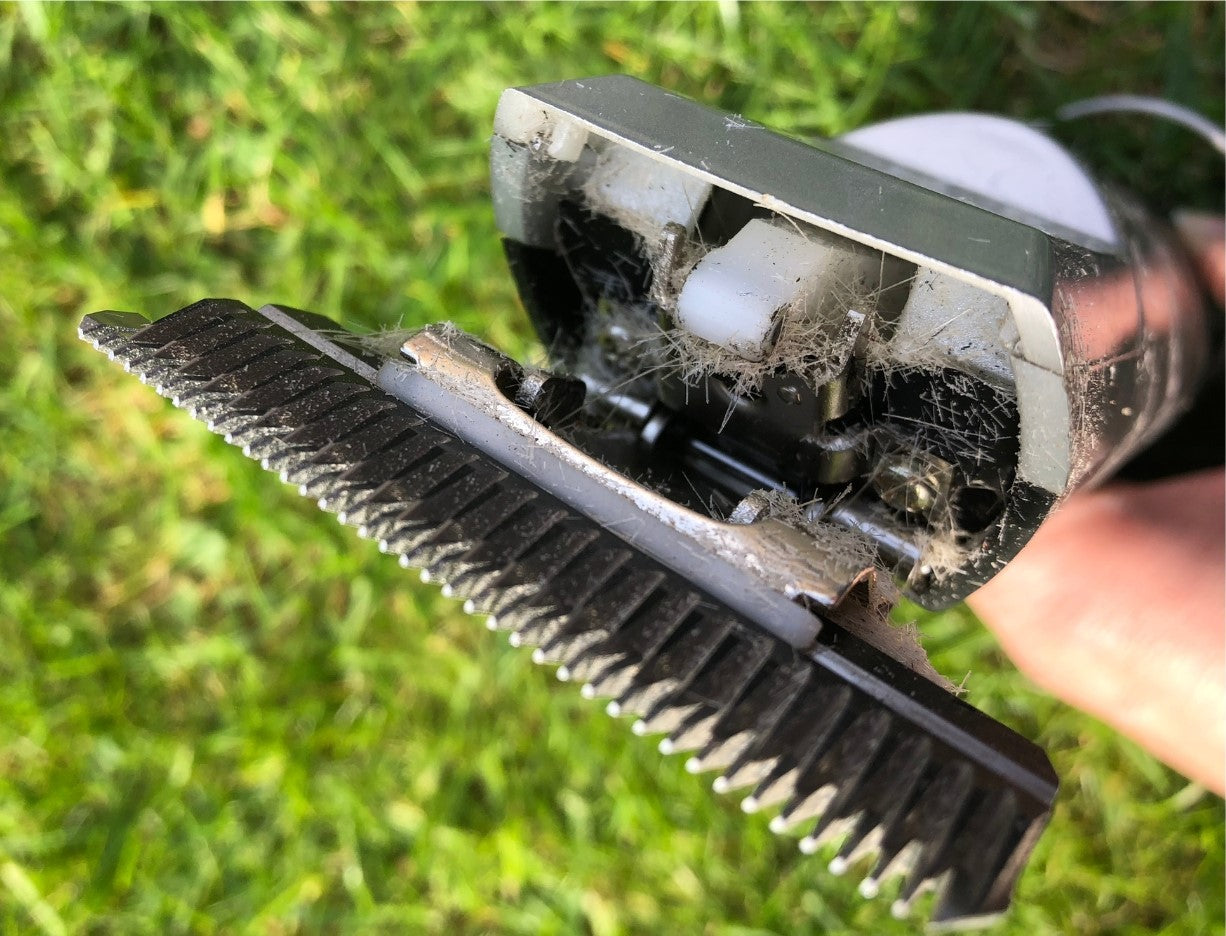There are several factors that can cause a clipper blade to chew or grab at the hair instead of smoothly and effortlessly cutting through your dog's coat. The most apparent reason could be that the blade has dulled or become blunt over time with repeated use. However, there are other potential causes. Below is our troubleshooting guide to outline potential reasons why your blade is not cutting and the solutions to remedy them.

DULL OR BLUNT CLIPPER BLADES
If your clipper is no longer clipping like it should, it could be that your blades have just become blunt. Even brand new clipper blades can dull quickly if care hasn’t been taken to prep the coat first.
COAT PREPARATION IS PARAMOUNT
Be warned - grease and dirt from the coat can dull a sharp clipper blade in seconds! So, first things first, before you begin to clip, it’s important to prep the coat by bathing your dog. Bathing removes dirt from the coat to give the best possible tidy finish, keep your clipper blades nice and sharp and give the most comfortable groom.

The coat will then need to be completely dried, either by leaving the coat to air dry or by using a cool, gentle flow setting with a hairdryer if your dog will allow it. The next step is completely brushing out the coat to remove all knots and tangles with a slicker brush and comb.
Clipping a clean and knot free coat ensures that the blades are less likely to chew or pull on the hair. Your clipper motor will also not have to work as hard so you will be reducing wear and tear to your clippers and prolong their useful lifespan.
If you choose not to clip before you have bathed your dog, the clipper may still manage to get through the coat, but you run the risk of blunting your clipper blades quickly and it won’t be the most comfortable clip for your dog or produce the best finished result.
 TopTip - Avoid using shampoos with additives or conditioners that may leave a film on your dog’s hair and coat your clipper blades. We love this specialist all-natural dog shampoo from Wildwash.
TopTip - Avoid using shampoos with additives or conditioners that may leave a film on your dog’s hair and coat your clipper blades. We love this specialist all-natural dog shampoo from Wildwash.
CLOGGED CLIPPER BLADES
When clipping, ensure your blade or comb attachments remains unclogged to maintain proper cutting performance. Regularly take short breaks during clipping to clear the hair out from the clipper blade and avoid it from accumulating between the cutting surfaces. Don’t forget to regular apply clipper oil (every 5-10 minutes during clipping) to your blades to keep them moving freely and flush out trapped hair from the cutting surfaces. Watch our video to see to how clean your A5 dog clipper blades here.

Prevent equipment blockages by removing the dead, loose undercoat before clipping to avoid ineffective cutting. Clipping through the dead undercoat coat can increase the risk of prematurely dulling your blades.
For shedding breeds, our coat rakes are the ideal tools to remove as much of the dead undercoat as possible to allow your clipper to glide through the coat easily and avoid clogging the blades. These can be used before or after the bathing stage.
Ensure your clipper blades are fully cleaned and oiled after each clip to keep them clean and rust free. Any residual dirt or grease from the coat can congeal and harden on the blades making it more difficult to get them clean and running properly if left for a length of time.
THE RIGHT CLIPPER FOR THE JOB
With the huge variety of dog breeds and coat types, it can be a daunting to work out which clipper and blade combinations would suit your own individual dog’s needs. We have removed the guess work for you by providing tailored Grooming by Breed clipper sets with blades and comb guides best suited to your breed.
However, many of the popular doodle breeds or mixed breeds can vary widely in their coat texture and density, so if you’re unsure whether your blades are suitable for your dog, contact us and we’ll be happy to assist you in finding the ideal match.
At Masterclip, we offer professional salon grade clippers and trimmers suitable for home users. Clippers are best for body clipping and all-round trimming duties, whereas trimmers are perfect for finer detailed trimming, but can be used to clip some smaller dogs too. Find out more about clippers verses trimmers here.

Above - Clipped using the Masterclip MD Roamer cordless dog clippers by Lauren Emily Dog Grooming
REPLACING WORN PARTS
After consistent use of your clipper and blades, you may encounter difficulties when attempting to replace old blades with new ones. Over time, the blade drive of a clipper naturally becomes looser and worn due to expected wear and tear.
While your old blades may still perform adequately as their tension has loosened with time, brand new blades with their original, tighter factory set tension may appear less effective or dull. In such cases, replacing the blade drive is often the solution.

Regular clipper servicing will ensure that worn parts are replaced and your clippers remain fully operational for many years of use. You can find our servicing and repair information here.
At Masterclip, we’re passionate dog clipping and offer free advice to help you find the right tools for you and your dog. Contact us now.


